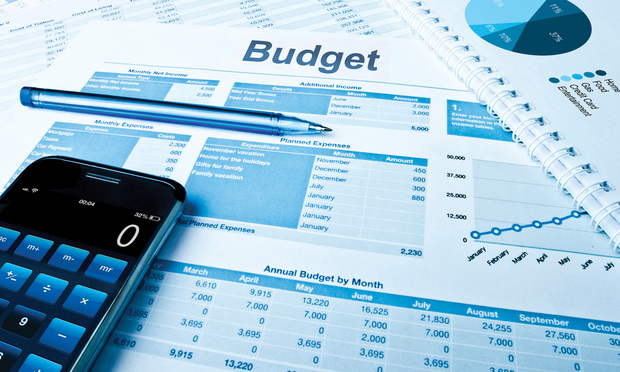Half of Australian GCs Turning to 'Innovative Solutions' in Face of Budget Cuts
Almost half of the in-house legal departments in Australia anticipate cuts to their legal budgets this year, according to a survey by Acritas and Thomson Reuters.
April 19, 2019 at 01:00 AM
2 minute read
By John Kang
The original version of this story was published on Law.com
 Australian in-house departments anticipate budget cuts to their legal departments this year.
Australian in-house departments anticipate budget cuts to their legal departments this year.
Australian legal departments are more likely to be cutting their legal budgets this year than most of their counterparts around the world plan to, a recent survey has found.
Almost half of the in-house legal departments in Australia anticipate cuts to their legal budgets this year, according to a survey by London-based research firm Acritas included in a report jointly published by Thomson Reuters.
The report, published earlier this month, found that 45 percent of the 73 senior legal counsel surveyed in Australia expect legal spending cuts in 2019.
This rate is nearly twice the global average, which had 24 percent of the 1,703 respondents saying they expect cuts. In comparison, 26 percent of 408 respondents in the United States foresee budget cuts, and the rate in China was 14 percent based on 56 respondents.
Meanwhile, the workload for corporate legal departments has increased, according to the report, citing as factors global economic and political uncertainty, increasing regulatory requirements and heightened scrutiny of corporate behaviors. In February, a yearlong public inquiry into misconduct in Australia's banking and financial service industry ended with a final report calling for tougher regulations.
As in-house legal teams in Australia continue to do more with less, general counsel have been looking to improve efficiency with innovation. The report indicated that 48 percent of 143 general counsel in Australia implemented “innovative solutions” to handle legal work in the past two years, including investing in document and data management systems, as well as contract management and generation software.
In-house lawyers also increasingly expect external counsel to be more practical, as opposed to the black-letter law technical approach, the report said. Out of 213 respondents in Australia, 16 percent of in-house teams favored law firms that demonstrate commercial sense, compared with just 4 percent of 1,155 respondents in the U.S. and the global average of 5 percent from 4,696 respondents.
This content has been archived. It is available through our partners, LexisNexis® and Bloomberg Law.
To view this content, please continue to their sites.
Not a Lexis Subscriber?
Subscribe Now
Not a Bloomberg Law Subscriber?
Subscribe Now
NOT FOR REPRINT
© 2025 ALM Global, LLC, All Rights Reserved. Request academic re-use from www.copyright.com. All other uses, submit a request to [email protected]. For more information visit Asset & Logo Licensing.
You Might Like
View AllTrending Stories
Who Got The Work
J. Brugh Lower of Gibbons has entered an appearance for industrial equipment supplier Devco Corporation in a pending trademark infringement lawsuit. The suit, accusing the defendant of selling knock-off Graco products, was filed Dec. 18 in New Jersey District Court by Rivkin Radler on behalf of Graco Inc. and Graco Minnesota. The case, assigned to U.S. District Judge Zahid N. Quraishi, is 3:24-cv-11294, Graco Inc. et al v. Devco Corporation.
Who Got The Work
Rebecca Maller-Stein and Kent A. Yalowitz of Arnold & Porter Kaye Scholer have entered their appearances for Hanaco Venture Capital and its executives, Lior Prosor and David Frankel, in a pending securities lawsuit. The action, filed on Dec. 24 in New York Southern District Court by Zell, Aron & Co. on behalf of Goldeneye Advisors, accuses the defendants of negligently and fraudulently managing the plaintiff's $1 million investment. The case, assigned to U.S. District Judge Vernon S. Broderick, is 1:24-cv-09918, Goldeneye Advisors, LLC v. Hanaco Venture Capital, Ltd. et al.
Who Got The Work
Attorneys from A&O Shearman has stepped in as defense counsel for Toronto-Dominion Bank and other defendants in a pending securities class action. The suit, filed Dec. 11 in New York Southern District Court by Bleichmar Fonti & Auld, accuses the defendants of concealing the bank's 'pervasive' deficiencies in regards to its compliance with the Bank Secrecy Act and the quality of its anti-money laundering controls. The case, assigned to U.S. District Judge Arun Subramanian, is 1:24-cv-09445, Gonzalez v. The Toronto-Dominion Bank et al.
Who Got The Work
Crown Castle International, a Pennsylvania company providing shared communications infrastructure, has turned to Luke D. Wolf of Gordon Rees Scully Mansukhani to fend off a pending breach-of-contract lawsuit. The court action, filed Nov. 25 in Michigan Eastern District Court by Hooper Hathaway PC on behalf of The Town Residences LLC, accuses Crown Castle of failing to transfer approximately $30,000 in utility payments from T-Mobile in breach of a roof-top lease and assignment agreement. The case, assigned to U.S. District Judge Susan K. Declercq, is 2:24-cv-13131, The Town Residences LLC v. T-Mobile US, Inc. et al.
Who Got The Work
Wilfred P. Coronato and Daniel M. Schwartz of McCarter & English have stepped in as defense counsel to Electrolux Home Products Inc. in a pending product liability lawsuit. The court action, filed Nov. 26 in New York Eastern District Court by Poulos Lopiccolo PC and Nagel Rice LLP on behalf of David Stern, alleges that the defendant's refrigerators’ drawers and shelving repeatedly break and fall apart within months after purchase. The case, assigned to U.S. District Judge Joan M. Azrack, is 2:24-cv-08204, Stern v. Electrolux Home Products, Inc.
Featured Firms
Law Offices of Gary Martin Hays & Associates, P.C.
(470) 294-1674
Law Offices of Mark E. Salomone
(857) 444-6468
Smith & Hassler
(713) 739-1250






